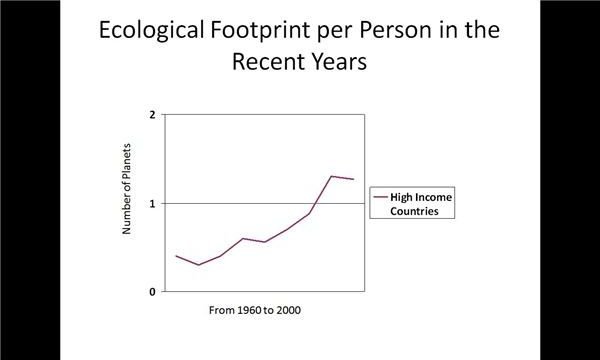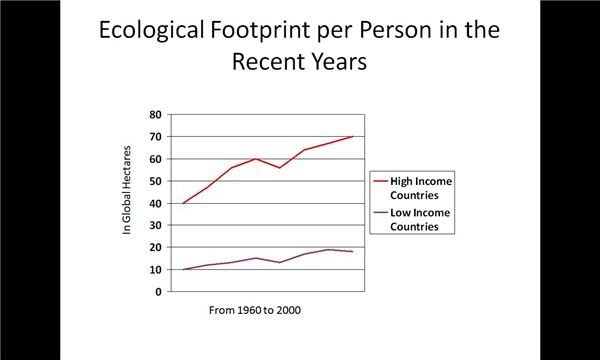How to Measure and Reduce Ecological Footprint
What is Ecological Footprint?
Before we learn about how to measure the ecological footprint, first let us see what ecological footprint is.
Let’s start with an example. Suppose there is a box of ten chocolates and there are five kids, so two chocolates can be given to each kid. However this is not always the case. Some kids might be done with just one chocolate and some kids might want more than two chocolates. The situation can be managed if each kid is given at least one chocolate and more is given to those who want more than two. Now consider ten more kids in the room making it a total of fifteen kids among whom a box of ten chocolates has to be divided. In this case if every kid wants a chocolate, there is a deficit of five chocolates, and this leads to a dilemma.
Now that you have an idea of the situation, let us come back to reality. The chocolates are like the renewable resources present on the planet and the kids are like humans whose demand increases with the day. In today’s world, the wants are more than the needs. Humans want more than what the planet has to offer. In simple words, ecological footprint is the human demand of the available renewable resources on the planet. It is not necessary for the renewable resources to be present in the individual’s vicinity. Ecological footprint is measured in global hectares.
There is no formula to give an exact value of what one’s ecological footprint, it is just an estimate based on one’s everyday activities. There are various methodologies and approaches to measure the ecological footprint. Ecological footprint can be measured at the individual level or for an organization or for a community or for a nation or for the entire planet as a whole.
Below are two graphs. The first one shows how many global hectares are required and the current number of earths required to support the entire ecological footprint of the number of humans.
Images

How the Ecological Footprint is measured: (explained in a Conceptual Way)
Various parameters are used to measure the ecological footprint. Some of the parameters are listed below to measure the ecological footprint of an individual or an organization or a nation or the planet itself.
Transportation: Your ecological footprint is higher if you travel a lot by planes and use cars even for small distances. Reduce it by carpooling, using public transportation, and using bicycles if you are not traveling long distances. Thereby your carbon footprint will be low, and you will do less damage to the environment.
Household: Switch off the electrical and electronic appliances if you are not using them. Use OLEDs (Organic Light Emitting Diodes) or LEDs (Light Emitting Diodes) instead of the conventional tube lights or the bulbs that use filaments. By doing so you use less energy, and thereby you reduce your ecological footprint. Dispose of garbage properly and do not burn plastics. Keep your surroundings clean and store away chemicals products and fertilizers properly. Don’t let them seep into the earth and cause damage to the environment.
Daily food: Buy food products that are not imported from far away countries. because by buying them we increase our ecological footprint by paying for the transportation of the product from the country it has been imported from. We also pay for the technologies that are used to keep it in a good condition until we consume it. If we go in depth, we can come up with more factors that will increase the ecological footprint.
Reduce, Reuse, and Recycle: Reduce your ecological footprint by recycling plastics and tin cans. Reduce the usage of plastics. Instead go for alternatives like jute bags and paper bags which you can recycle very easily. Don’t throw away stuff that you can use more than once. Even if you do, make sure you dispose of properly and not in a way that it causes harm to the environment.
In the end if your total is below a certain level, your ecological footprint is low. Visit one of the following sites to check (not accurately though) your ecological footprint:
How to Reduce Our Ecological Footprint?
There are many ways you can reduce your ecological footprint. You can start reducing your ecological footprint right now. Look around you; is there a room in your house where you have an electrical appliance running and no one is using? If so, switch it off. Stuck in traffic and your car’s engine is running? Turn it off. Here is a list of things that you can do to reduce your ecological footprint.
-
Turn off your vehicle’s engine when you are stuck in traffic. This reduces carbon emission, thereby reducing your ecological footprint.
-
Turn off water taps when you are not using them.
-
Turn off electrical appliances if you are not using them.
-
Use renewable resources. For instance use solar water pool heaters to heat water in your pool. Use solar cookers to cook and solar lights to light up your home, etc.
-
Try not to buy goods like fruits that are available even if it is not their season. Fruits are made available even in different seasons, but this takes a lot of effort and various processes leading to a higher ecological footprint.
-
Try not to have much meat in your diet, stop or at least reduce your smoking habits, and buy locally produced fruits and vegetables.
-
Plant trees. This is one of the main ways of reducing your ecological footprint.
Visit Footprint Standards to read more on the standards of measuring Ecological Footprints.
